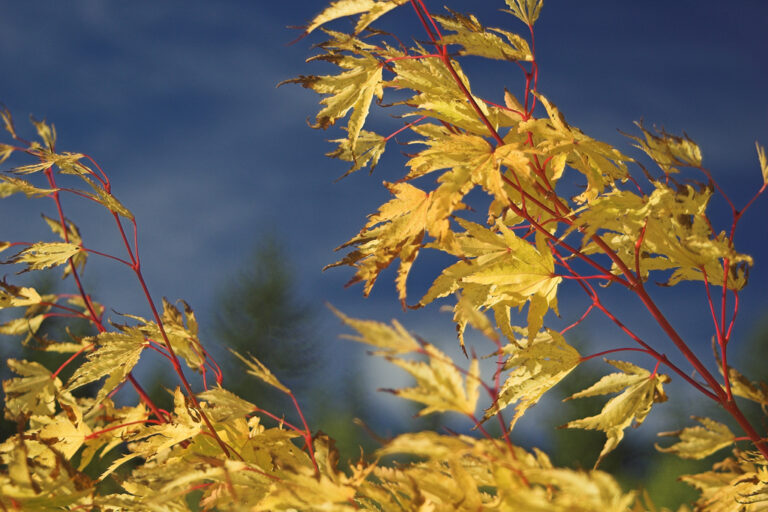Comprehensive Guide for Growing Ti Plants Outdoors

Are you looking to add a touch of the tropics to your landscape? Look no further than the Hawaiian ti plant. With its lush, colorful leaves and upright stature, the Cordyline fruticosa is sure to catch the eye of all who see it.
Whether you’re new to tropical gardening or a seasoned pro, caring for Hawaiian ti plants outdoors requires some specialized knowledge. But once you have the hang of it, these plants are relatively easy to maintain. This comprehensive guide has all the information you need to get started with growing ti plants in your garden.
What You’ll Learn
- Ti Plants 101
- Variety Selection
- Placement Tips
- Propagation Protocols
- Growth Requirements
- Maintenance Tips
- Pest and Disease Management
Let’s dive in!
Ti Plants 101
The Hawaiian ti plant, also known as Cordyline fruticosa, belongs to the tropical Cordyline genus. It is hardy in Zones 10 to 12 and originates from maritime Southeast Asia, North Australia, and West Oceania. The plant typically reaches a height of 10 feet and a spread of five feet when grown outdoors. It features thin, lanceolate leaves that start out purple to red and may mature to deep green. The plant produces clusters of star-shaped flowers in various colors and small berries after pollination. It contains toxic saponins and should be kept away from household pets.
Hawaiian ti plants are known colloquially as good luck plants, cabbage palms, and palm lilies. The leaves are used in floral arrangements, and the plant has various religious, culinary, constructional, and decorative uses in Hawaiian culture.
Variety Selection
Choosing the right variety of C. fruticosa is crucial for a cohesive landscape design. There are numerous cultivars to choose from, each offering unique colors and patterns. Here are some popular varieties:
- Florica: Deep burgundy foliage accented with cream, green, and pink.
- Red Sister: Bright shades of red.
- Haole Girl: Oranges and yellows.
- Kahuna: Standard green.
- Rising Sun: Multicolored foliage.
When selecting a variety, consider factors such as color, height, and size to create a harmonious garden design.
Placement Tips
When placing your Hawaiian ti plants in the landscape, consider whether you want them as solitary specimens, groupings, or accents. Ti plants can be grown in the ground or in containers. Ensure they receive partial shade to full sun exposure and have well-draining soil with a pH of 5.5 to 6.5. Container-grown plants offer the flexibility to move them based on weather conditions and can be a stylish addition to patios and entryways.
Propagation Protocols
Propagation methods for outdoor ti plants include seed sowing, division, and transplanting. Seed sowing allows for genetic diversity but may result in variations from the parent plant. Division works well for plants with multiple stems, while transplanting is essential for relocating established plants.
Seed Sowing
To grow ti plants from seeds, collect ripe berries from mature plants and sow them in a peat moss and vermiculite mix. Maintain the seeds at a minimum of 65°F with bright, indirect light for germination. Transplant seedlings into individual containers once they reach a suitable size.
Division
Select a healthy, multi-stemmed plant for division, separate the stems, and transplant the divisions into new locations.
Transplanting
Prepare planting sites with well-draining soil and choose containers with proper drainage for container-grown ti plants. Transplant the plants, ensuring they receive partial shade to full sun exposure.
Growth Requirements
To ensure the health and vitality of your ti plants, provide them with partial shade to full sun exposure and temperatures between 65 to 95°F. Proper soil drainage, pH levels, and organic matter are essential for optimal growth. Water the plants when the top layer of soil feels dry and fertilize them in spring and summer as needed. Regular pruning and repotting may be necessary to maintain plant health.
Maintenance Tips
To keep your ti plants looking their best, prune yellowing or damaged leaves and repot container-grown plants as needed. Protect outdoor plants from frost by bringing them inside when temperatures drop below 30°F.
Pest and Disease Management
Outdoor ti plants are susceptible to pests such as whiteflies, mealybugs, and scale, as well as diseases like leaf spot and root rot. Regular inspection and prompt treatment are essential to prevent infestations and infections. Physical removal, insecticidal soap, horticultural oil, and systemic insecticides can help control pests. Proper care practices, including avoiding overwatering and providing adequate airflow, can reduce the risk of disease.
In conclusion, growing ti plants outdoors can add a touch of the tropics to your landscape. With the right variety selection, placement, propagation, and maintenance, you can enjoy vibrant and healthy ti plants in your garden. By following the tips outlined in this guide, you can successfully cultivate beautiful Hawaiian ti plants and create a tropical oasis in your outdoor space.
Remember, moderation may be challenging when it comes to these gorgeous plants, but with proper care and attention, your ti plants will thrive and enhance the beauty of your landscape. Let’s make it “ti time” in your garden!
Do you have any questions or tips to share about growing outdoor ti plants? Feel free to leave a comment below. And for more information on tropical foliage plants, check out our related guides on pothos, prayer plants, and dumb cane.
Remember, a well-placed ti plant can truly hit the spot in your garden!
The article outlines comprehensive information on growing ti plants outdoors, covering topics such as plant selection, placement, propagation, care, and pest management. With detailed insights and practical tips, readers will learn how to cultivate healthy and vibrant ti plants in their outdoor spaces. Whether you’re a novice or experienced gardener, this guide provides valuable information to help you successfully grow and maintain beautiful Hawaiian ti plants in your garden.





